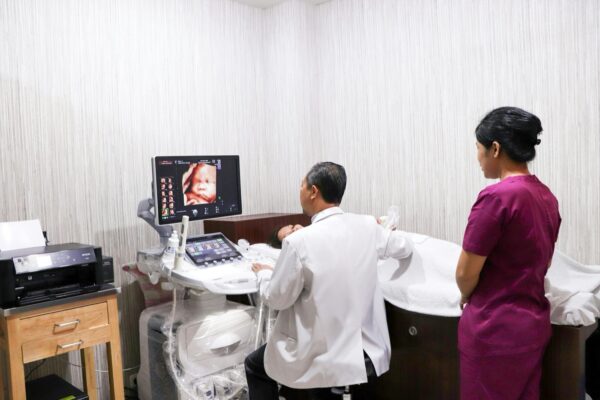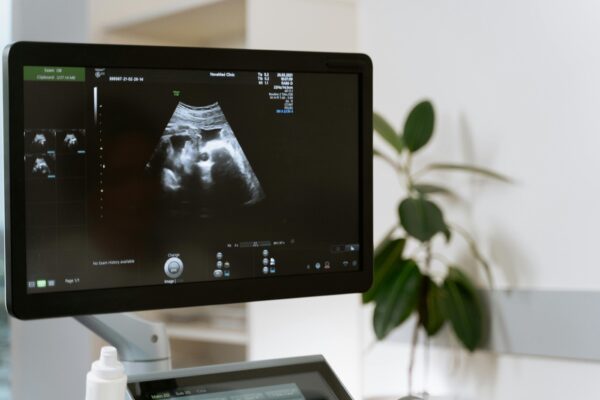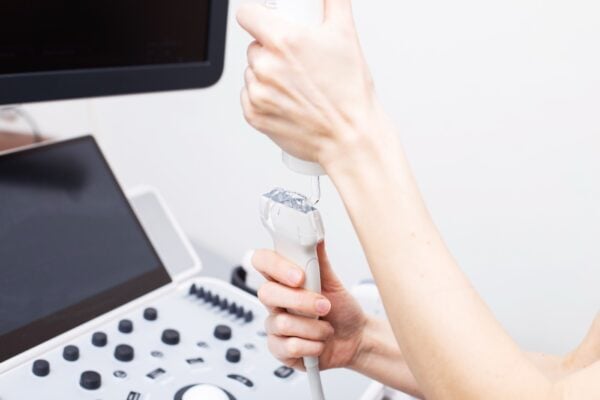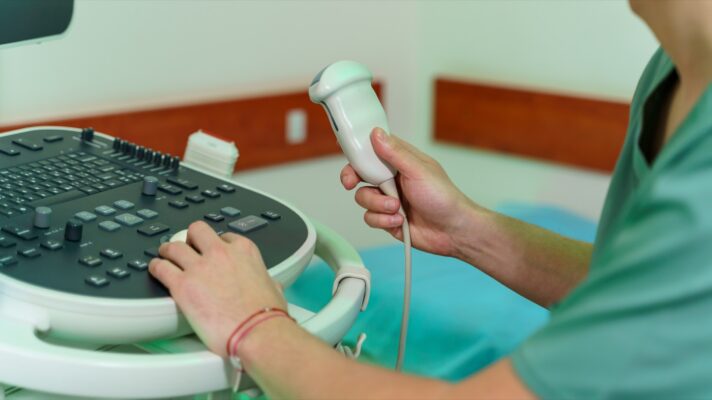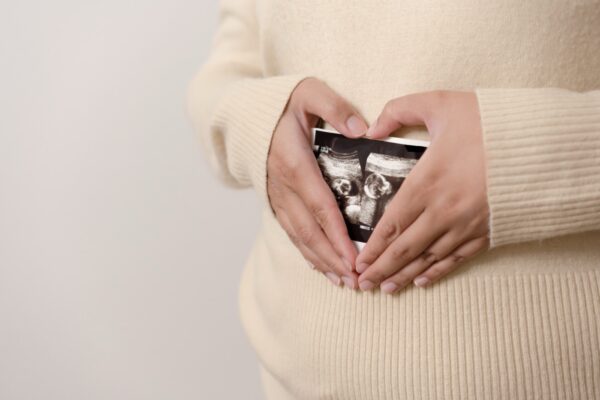Ultrasound Training Costs Explained: Budgeting for a Profitable Studio
How much should you budget for elective ultrasound training and what return can you expect? This long form guide breaks down real world costs, what a high quality course includes, how to compare options, and practical budgeting templates you can apply today.
Why investing in Elective Ultrasound Training pays off
Starting an elective ultrasound business or upgrading your studio imaging begins with training. Quality training turns a machine into a revenue generator. A well trained operator creates crisp 3D and 4D keepsake images that clients love and share. Those referrals and social shares become your most profitable marketing channel.
Elective ultrasound training is not just about pushing buttons. It covers probe angles, presets, maternal positioning, and client handling. Training builds confidence so you can book appointments, deliver consistent results, and scale to multiple machines or locations with consistent quality.
From a business perspective the training cost is an investment. If your studio charges for keepsake sessions, gender reveals, and extended packages, a few extra bookings per week pay back training quickly. Approaching training as part of startup costs helps you forecast breakeven points and cash flow with clarity.
Finally, good training reduces costly mistakes. Machines are expensive. Misuse can increase service calls, image failures, and unhappy customers. Training protects your equipment investment while improving the client experience which ultimately increases lifetime value.
What a premium Private Hands on Ultrasound Training includes
Below is the exact training option many entrepreneurs ask about when planning to open a keepsake studio. Use this as a baseline for budgeting and comparing other programs.
Price: $10,000
Duration: Three day training session at your location
Description: Our private 3D 4D ultrasound training is conducted at your location, using your own equipment to ensure the best learning experience. You will be trained to operate your 3D 4D ultrasound machine and optimize it for high quality images. The training covers early gender determination 15 to 16 weeks, 2D ultrasound techniques, identifying common abnormalities, and advanced 3D 4D scanning techniques. This hands on training uses both real clients and training phantoms. By the end you will have the skills necessary to perform elective ultrasounds with confidence.
Why private hands on training commands a premium price
Private training at your location removes travel and scheduling friction. The trainer works with your actual machine and the room where you will see clients. That means immediate troubleshooting of machine settings and room layout to optimize workflow. Trainers often tailor the schedule to your business model including session timing, package upsells, and client handling techniques.
Trainers that deliver private sessions have deep practical experience and often include follow up support. They bring materials, phantoms, and sometimes additional staff to help practice client positioning and scanning technique. The tailored nature of the instruction makes it more efficient and more likely to change your day to day operations permanently.
Finally, private training accelerates skill acquisition. In small group settings you may watch others. In a private session you get more machine time, more direct feedback, and more opportunity to master scanning for different fetal positions and body types. That faster competency is usually worth the higher upfront cost.

Breaking down the $10,000 price tag
Understanding where the dollars go makes it easier to evaluate value. Here are the main line items that typically comprise a private three day course.
Trainer time and expertise Accounts for a large portion. You pay for senior instructors who have performed thousands of scans, know how to fix common equipment issues, and can train others to replicate their techniques reliably.
Travel and on site setup If the trainer travels to you there are transport costs, time away from other clients, and often additional support materials. Trainers bring phantoms and training supplies which require logistics and care.
Real client scans and phantoms Using both real clients and training phantoms increases learning value but requires more coordination. Screening clients for appropriate cases and compensating models may be part of the cost.
Post training support Many premium programs include check ins, remote image review, and troubleshooting for a set period after training. That ongoing access helps cement skills and reduces the cost of mistakes.
What is often included and what is optional
Included items usually cover machine optimization, basic physics and image settings, common scanning protocols, and hands on practice. Optional add ons can include advanced inventory on pocketed cases, marketing coaching, video production for social proof, and extended remote mentorship. Clarify these details before you sign up.
Ask the trainer what follow up support looks like. A five minute phone call is not the same as a scheduled image review session where the trainer annotates images and suggests improvements. Those differences affect long term outcomes and booking velocity.
Also verify model release forms and consent procedures the trainer uses for real client practice. Professional trainers should provide sample forms and advice for handling client communications in the studio setting.
Comparing training options: private in person versus group versus online
Not every studio needs private training. Here are the most common alternatives and how to compare them.
Group in person courses Typically more affordable per person. You gain peer learning and lower cost but less machine time and less tailoring to your exact equipment. Group courses are a good fit when budgets are tight and you need core competency fast.
Online courses and video libraries Useful for initial theory and review. Online content is inexpensive and scalable. However, without hands on scanning time and expert feedback, you will not reach full competency for high quality 3D and 4D keepsake imaging.
Franchise or branded training programs If you join an ultrasound franchise you often get a training package included or discounted. Franchise training may also require standardized techniques and branded marketing support. Compare those costs against the flexibility of independent training.
When comparing, ask for a skills checklist showing what competencies you will have after the course. That helps you score programs on the same objective scale.
How training choice affects time to revenue
Time to first paying client is one of the most important metrics. Private hands on training gets you operational fastest. If you already have a client list or referral sources, a focused three day session at your site can translate to bookings in the first week. Group courses often require additional practice before you can confidently charge full price.
Factor in shadowing or supervised sessions after your course if your state or your preferred business model requires it. That supervised practice can delay revenue but improves quality and reduces refund risk.
In short, if your priority is launching quickly and reliably, budget for private training or private follow up sessions that accelerate your proficiency.
Hidden costs and ongoing expenses to budget for
Training is only one part of startup expenses. To budget realistically include these additional line items.
Equipment purchase or upgrade A 4D ultrasound machine can be the largest single expense. Options range from refurbished units to top end new models such as HD imaging platforms. Factor shipping, installation, and initial service agreements into your capital expense plan.
Probes and maintenance Probes wear out and require occasional replacement. Scheduled maintenance and service contracts are smart to avoid downtime. Some suppliers offer machine leases which spread cost but increase monthly operating expenses.
Studio setup and supplies Comfortable seating, privacy screens, marketing collateral, printing, and consumables such as gel and gloves. Even small items add up and should be included in month one and recurring budgets.
Insurance and legal Liability coverage and business registration fees vary. Check local requirements and include the cost of professional forms, model releases, and template policies if you use them.
How to finance training and lower upfront burden
If the $10,000 price tag is steep consider these practical options to manage cash flow.
Payment plans Many trainers offer split payments. Ask about deposits, scheduled payments, and whether an installment plan includes interest or fees. Written payment terms protect both parties.
Bundle with machine purchase If you are buying a machine, ask suppliers about bundled training. Vendors often include basic training or discount private sessions when you buy through them. Bundling is a common route to lower total cash outlay.
Lease to own or equipment financing Finance packages for ultrasound machines can include a training allowance. Lease payments convert capital expense into predictable monthly operating expense which can be easier for new studios to manage.
Small business loans or lines of credit If you have business credit a small loan can finance training and studio setup. Ensure you calculate monthly repayment into your break even analysis so you know when training is truly paid back.
Quick ROI example
Estimate a breakeven using conservative numbers. Imagine you charge $125 for a standard keepsake session and $225 for an extended package. If training helps you add 10 extra bookings per month at an average price of $150 that is $1,500 per month. At that rate a $10,000 training investment pays for itself in seven months. Add referrals and package upgrades and the payback can be faster.
Use a simple spreadsheet to model your expected bookings per week, average revenue per booking, and variable costs. That calculation will show you how many additional bookings you need to justify private training versus a cheaper group course.
Always use conservative estimates for planning. Early months often require time to build awareness so plan for slower ramp up and keep a buffer for marketing spend to accelerate bookings.
Choosing the right course for your business goals
Balance budget with desired outcomes. If your goal is premium keepsake imaging with strong social proof and consistent referrals, private hands on instruction is often the fastest route. If you are testing the market and want to minimize risk, a lower cost group or online course plus on the job practice may suffice.
Ask these questions before you enroll:
- Does the trainer work on my specific machine model?
- What exactly is the post training support and for how long?
- Can the trainer provide references or success stories?
- Are model releases, consent forms and sample scripts included?
- What is the recommended practice plan after the course to reach full competency?
Answers to these questions will reveal whether the advertised price covers real world needs or whether additional spending will be required. A low cost course that leaves you guessing can cost more in refunds and lost bookings than an upfront premium one that makes you profitable quickly.
Evaluating trainer credentials
Look for trainers who can show years of hands on scanning experience, documented student success, and evidence of continuing education. Testimonials and before and after image galleries are valuable signals. Trainers affiliated with recognized ultrasound trainers organizations or equipment vendors tend to have structured curricula and resources that independent one time instructors may not provide.
Also confirm whether the trainer can adapt content to elective ultrasound business needs rather than purely diagnostic hospital scanning. The elective ultrasound business focuses on keepsake quality, client experience, and studio workflow which require a different emphasis in training.
Ultrasound Trainers is a resource many owners reference for equipment and training. Mentioning the name of your preferred trainer during conversations often helps you align expectations and get the correct package for your goals.
Frequently asked questions
Is $10,000 a normal price for private three day training?
Yes it is within the expected range for a private three day session delivered at your site by an experienced instructor. Prices vary based on trainer reputation, travel distance, included materials, and post training support. Lower cost options exist but they typically trade off on time on your own machine and depth of ongoing support.
Can I learn from online courses instead?
Online courses are excellent for theory and preparation. They are less effective for mastering 3D and 4D scanning because those skills require guided hands on practice. Many owners combine online theory with either private or group hands on sessions for the best value.
Do trainers help with business setup and marketing?
Some trainers include basic business advice and marketing tips such as session scripting and upsell strategies. Others go further offering turnkey packages including marketing templates, photo and video assets, and local launch plans. If marketing help is important to you, make sure it is explicitly included in the scope.
Actionable budgeting checklist
Use this checklist to build a starter budget for opening or upgrading a keepsake studio.
- Training fee estimate including travel and support: $10,000 for private three day session.
- Ultrasound machine purchase or lease estimate: depends on model allow for 30K to 90K ranges for new top end systems and lower for refurbished options.
- Probes and maintenance fund: set aside 5K annual reserve.
- Studio setup and furniture: 2K to 8K depending on finishes.
- Initial marketing budget for launch: 2K to 10K for social ads, influencers, and local promotions.
- Operating buffer for first three months payroll and fixed costs: 5K to 15K.
Adjust numbers to your market and pricing strategy. If you plan to Buy Elective Ultrasound Machine as part of a bundled package negotiate training discounts.
Final thoughts and next steps
Elective ultrasound training is a critical investment in quality, safety, and revenue. The Private Hands on Ultrasound Training option listed above gives you a clear pathway to competency and fast time to revenue. When you build your financial model include training as part of capital and not as an optional add on. That mindset changes your planning and often reduces time to profitability.
If you are comparing options take the time to list promised deliverables and post course support side by side. A small price premium for better continued mentorship often pays for itself in fewer refunds and faster growth.
Need help modeling your breakeven or comparing training packages side by side? Contact Ultrasound Trainers for more detailed guidance and to ask about available course schedules and bundled equipment and training offers. Call (877) 943 7335 or email Info@UltrasoundTrainers.com and mention this article for program details and next steps.
Call to action
Are you ready to budget for success? Comment with your studio goals or the model you are considering and we will help you estimate time to breakeven. If you prefer direct assistance call (877) 943 7335 or email Info@UltrasoundTrainers.com for a tailored quote and course timeline.
Note: This article references elective ultrasound training options and general business scenarios. It is designed for studio owners and entrepreneurs exploring a 3D 4D ultrasound business and not intended as clinical guidance. For clinical protocols consult qualified medical professionals and manufacturer guidance for your equipment.




